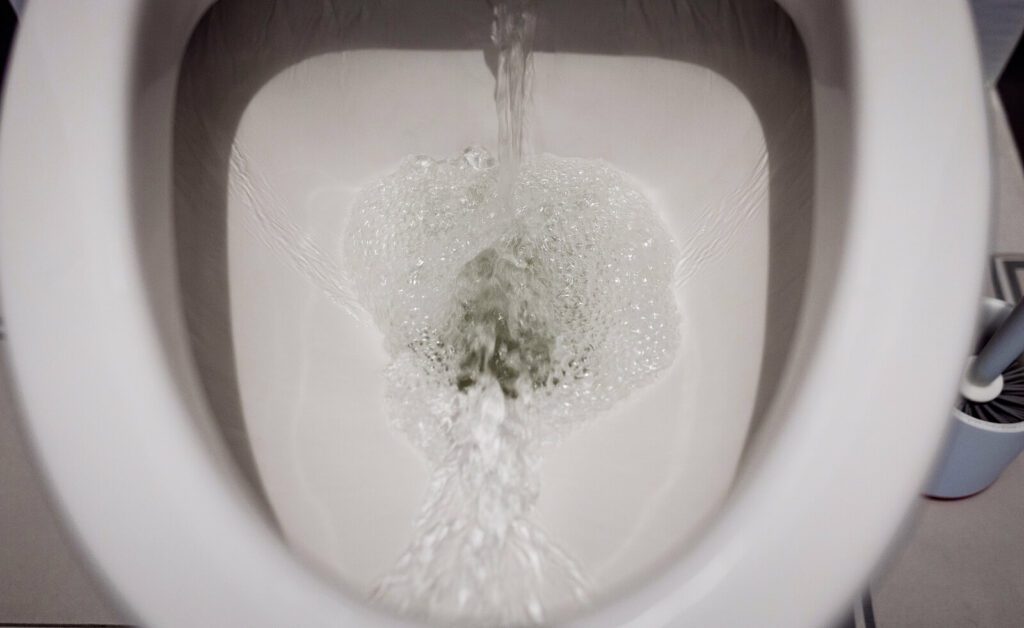Discovering that your toilet is bubbling unexpectedly when you’re enjoying a shower can be a perplexing and potentially unsettling experience. While the plumbing system in our homes may seem like a labyrinth of interconnected pipes and fixtures, understanding the reasons behind this phenomenon can demystify the issue. In this comprehensive guide, we’ll delve into the intricacies of residential plumbing, explore the potential causes of toilet bubbling, provide troubleshooting and solutions, and offer preventive measures to ensure a smoothly functioning plumbing system.
Understanding the Plumbing System:
Residential plumbing is a complex network of pipes and fixtures designed to facilitate the distribution of water throughout our homes. In the context of toilet bubbling when the shower is running, it’s essential to grasp the interconnected nature of plumbing systems.
The toilet and shower are not isolated entities; rather, they share a common plumbing network. The water supply and drainage systems overlap, creating a scenario where issues in one area can affect others.
Potential Causes of Toilet Bubbling:
Air Blockage in the Plumbing System:
Explanation: The ingress of air into the plumbing pipes can lead to air blockages.
Effects: This can result in air pushing its way through the toilet, causing noticeable bubbling when the shower is in use.
Venting Issues:
Role of Vent Pipes: Vent pipes play a crucial role in allowing air into the plumbing system, preventing airlock issues.
Consequences: Problems with venting can disrupt the balance in the system, contributing to toilet bubbling during activities like showering.
Clogged or Obstructed Pipes:
Debris Buildup: Over time, debris such as hair, soap scum, and other materials can accumulate in the pipes.
Consequences: This buildup can restrict water flow, leading to reduced efficiency and potential toilet bubbling.
Sewer Line Issues:
Connection: The toilet is directly connected to the main sewer line.
Consequences: Any issues in the sewer line, such as blockages or damage, can reverberate back to the toilet, manifesting as bubbling during water-intensive activities like showering.
Troubleshooting and Solutions:
A. DIY Inspection and Basic Maintenance:
Steps to Check: Begin by visually inspecting exposed pipes for any visible blockages.
Maintenance Tips: Regularly clear drains, use drain guards to prevent debris buildup, and inspect plumbing fixtures for potential issues.
B. Seeking Professional Help:
Importance: Professional plumbers possess the expertise to diagnose and address complex plumbing issues.
When to Contact: If DIY efforts prove insufficient or if you suspect a more intricate problem, it’s advisable to contact a plumber promptly.
C. Repairing or Replacing Components:
Identify Components: Pinpoint specific components contributing to the problem, such as damaged pipes or malfunctioning valves.
Options: Consider repair or replacement of faulty components, addressing the root cause of the toilet bubbling.
Preventive Measures:
A. Regular Plumbing Maintenance:
Importance: Regular checks, performed at least twice a year, are essential for identifying and addressing potential plumbing issues early on.
Tips: Clear drains using appropriate methods, check for leaks, and inspect pipes periodically to ensure a healthy plumbing system.
B. Educating Household Members:
Informing Others: Raise awareness about proper plumbing practices, emphasizing responsible use of fixtures and the impact on the overall plumbing system.
Responsible Use: Encourage mindful usage, such as avoiding excessive use of toilet paper and disposing of items properly to prevent clogs.
FAQs:
Q1: Can I fix toilet bubbling issues on my own?
A: Yes, for minor issues, you can perform a DIY inspection and clear visible blockages. However, for complex problems or if you’re unsure, it’s advisable to seek professional help.
Q2: How often should I perform plumbing maintenance?
A: Regular checks are recommended at least twice a year to catch potential issues early and ensure the smooth operation of your plumbing system.
Q3: Why is the venting system important in plumbing?
A: Vent pipes allow air to enter the plumbing system, preventing airlock issues and maintaining proper water flow, which helps prevent problems like toilet bubbling.
Q4: What are common signs of sewer line issues?
A: Slow drainage, gurgling sounds, and foul odors are common indicators of sewer line problems, which can contribute to toilet bubbling.
Q5: Can clogged pipes cause long-term damage?
A: Yes, persistent clogs can lead to reduced water flow, potential pipe damage, and an increased risk of plumbing issues. Regular maintenance and responsible use can mitigate these risks.
Conclusion:
In conclusion, understanding why your toilet is bubbling when the shower is running involves recognizing the interconnected nature of residential plumbing systems. By addressing potential causes, whether through DIY efforts or with the assistance of a professional plumber, you can restore the proper functioning of your plumbing system. Moreover, implementing regular maintenance practices and promoting responsible water usage within your household can contribute significantly to preventing future plumbing issues.

A group of home improvement enthusiasts and bathroom design experts, combines in-depth knowledge and a shared passion to deliver engaging, informative content that guides readers through the world of bathroom innovation and style.

Leave a Reply